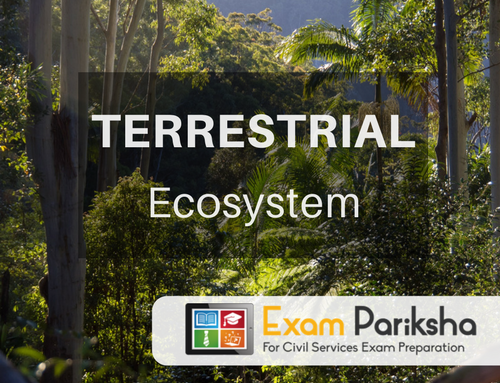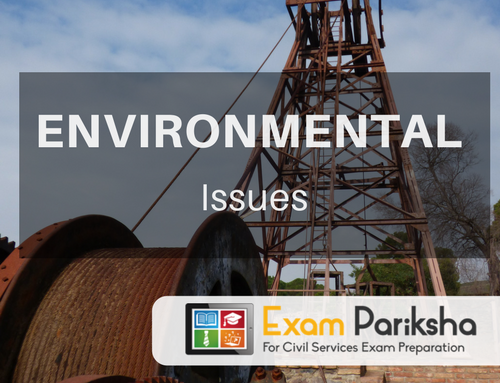An Ecosystem which consists the water is the main source of the habitat is known as the Aquatic Ecosystem. An aquatic ecosystem is essentially a group of interacting organisms dependent on one another and their water environment for nutrients (e.g., nitrogen and phosphorus) and shelter.
While, familiar examples are ponds, lakes and rivers, but aquatic ecosystems also include areas such as floodplains and wetlands, which are flooded with water for all or only some parts of the year.
- Fresh Water Ecosystem: The Salt Contains the Fresh Water Bodies is Very Low always than the 5ppt.
- Marine Ecosystem: The Water Bodies Contains the Salt Concentration Equal or Above the Sea Level.
- Brackish Water Ecosystem: These Water Bodies have Salt in the Content Between 5 to 35 PPT.
Aquatic Organisms
The Organisms in the Aquatic Organisms are unevenly distributed but can be classified on the basis of their life:
- Neuston:
They are Unattached Organisms Which Live at the air water interface Such as Floating Plants Etc. Some of the Organisms Spend Most of the Lives at the top of the Air Water Surface.
- Periphyton:
These Organisms Which Remain Attached with the Steams and Leaves of the Rooted Plants or Substances Emerging Above the Bottom Mud.
- Plankton:
This Group includes all the Microscopic Plants such as Algae and Animals Like Crustaceans and Protozoans.
- Nekton:
These Group Contains Animals Which Are Swimmers. They are Relatively Large and Powerful. The Animals range in Size from the Swimming Insects to the Largest Animals like Blue whale.
- Benthos:
The Benthic Organisms are those Found Living in the Bottom of the water Mass. Every Aquatic ecosystem contains well developed Benthos.
Factors Affecting the Aquatic Habitats:
- Sunlight:
Sunlight Penetration Rapidly Diminishes as it Passes down the Coloum of Water. As Based on the Light Penetration and Plant Distribution they are Classifies as Photic and Aphotic Zones.
- Photic Zones:
It’s the Layer of the Aquatic Ecosystem, up to Which Light Penetrates and Within Photosynthesis Activity Confined. Both Photosynthesis and Respiration Activity.
- Aphotic Zones:
The Lower Layers of the Aquatic Ecosystem Where Light Penetration and Plant Growth Are Restricted forms the Aphotic Zones. Only Respiration Activity took Place.
- Dissolved Oxygen:
In Aquatic Ecosystem Oxygen dissolved in Water, where it Concentrates Varies Constantly Depending On Factors that Influence the input and Output of Oxygen in Water. Oxygen Enters the Aquatic Ecosystem through air Water interface and by Photosynthetic Activities of Aquatic Plants.
- Transparency:
It Effects the Extent of the Light Penetration. Suspended Particulate Matters Such as Clay, Slit, Phytoplankton, Etc.
- Temperature:
The Water Temperature Changes Less Rapidly than the temperature of Air Because Water has a Considerably Higher Specific heat than air. Since Water Temperature Are Less Subject to Change, the Aquatic Organisms have Narrow Temperature Tolerance Limit.
Lake Ecology
Ageing of Lakes:
Lakes are Born as they Originate by Various Geological and Geomorphic Events and grow with time to time in Various Stages. Over Periods Spanning Millennia Ageing Occurs as the Lakes Accumulate Mineral and Organic Matter and Gradually Filled up.
Eutrophication:
Eutrophia Means Adequate and Healthy Nutrition. It is a Syndrome of ecosystem response to Addition of Artificial or Natural Substances Such as Nitrates and Phosphorus. Eutrophication is the Enrichment of an Aquatic system by the Addition of Nutrients.
- Some Algae and Blue Green bacteria thrive on the excess ions and a population explosion covers almost entire surface layer is known as algal bloom.
- Oxygen is required by all the respiring animals in the water and it is replenished by photosynthesis of green plants.
- All this eventually leads to degradation of Aquatic ecosystem and death of its organisms.
- It leads to change in animal and plant population & degradation of water & habitat quality.
Eutrophication eventually creates a deterius layer in the ponds & lakes and produces successively shallower depth of surface water.
- Decreased biodiversity:
Algal blooms restrict the sunlight to penetrate & effects the photosynthesizing plants.
- New species invasion:
Eutrophication may Cause the Ecosystem Competitive by Transforming the Normal Limiting Nutrient to abundant Level
- Toxicity:
The Algal Blooms when Die or Eaten, Release Neuro & Hepatotoxins Which can kill Aquatic Organisms & Pose threat to Humans. Depletion of Dissolved Oxygen Level and the Coral Reefs So the Affects Navigation due to increased turbidity.
Mitigation measures for eutrophication:
The Interfaces Between a Flowing Body of Water and Land Created Near the Waterways, farms, Roads, Etc. Sediments and Nutrients Are Deposited in the Buffer Zones instead of Deposition in Water. The Successful Method of Minimizing the non-Point Pollution. They are Nitrogen Testing & Modelling.
Harmful Algae Blooms:
Algae are Microscopic Organisms that can be Found Naturally in Coastal Waters. They Are Major Producers of Oxygen and Food for Many of the Animals. A bloom Often Results in a Color Change in the Water. Algal Bloom can be any Colour, but the Most Common Ones Are Red and Brown.
Wetland Ecosystem
The Area of Marsh, Fen, Peatland, Whether Natural Artificial Permanent Temporary with Water that is Static Flowing, Fresh, Brackish Salt, Including areas of Marine Water the Depth.
Functions of Wetlands:
- Habitat to Aquatic A Flora and Fauna as Well as Numerous Species of Birds, including Migratory Species.
- Nutrients Recycling
- Water Purification
- Floods Mitigation
- Maintenance of Stream Flow
- Ground Water Recharging
- Provide Drinking Water.
Characteristics of Wetlands:
- Covered by Waterlogged soil for At least Seven Days During the Growing Season.
- Adopt Plant Life.
- Hydrilic Soils.
- Stabilization of Local Climate.
- Source of Live Hood for Local People.
Reasons for Depletion of wetlands:
- Conversion for Lands for Agriculture.
- Overgrazing
- Removal of Sands from beds.
- Aqua Culture.
- Pollution
- Domestic Waste.
- Climate Change.
Mitigation Measures for saving vanishing wetlands:
- Survey and Demarcation.
- Artificial Regeneration.
- Protective Measures.
- Weed Control
- Wildlife Conversation
- Environmental Awareness
Estuary Ecosystem
They are Located where the River meets the Sea. They are the Water Bodies where the Flow of the Fresh Water from River Mixes with the Salt Water Transported, by tide, from the Oceans.
Characteristics of Esturine ecosystem:
- An Estuary is a Semi Enclosed with a Coastal Body of Water with one or More Rivers or Streams Flowing into it.
- It has Free Connection with a n Open Sea
- The Complete Salinity Range from 0-35 PPT is seen from the Head to the Mouth of an Estuary.
- Estuaries ae Typically Classifies by their Geomorphological Features or by Water Circulation Patterns and Can Be Referred by Many Different Names Such as Bays, Harbors, Lagoons, inlets, Etc.
- Estuaries are Usually Biologically Highly Productive Zones.





